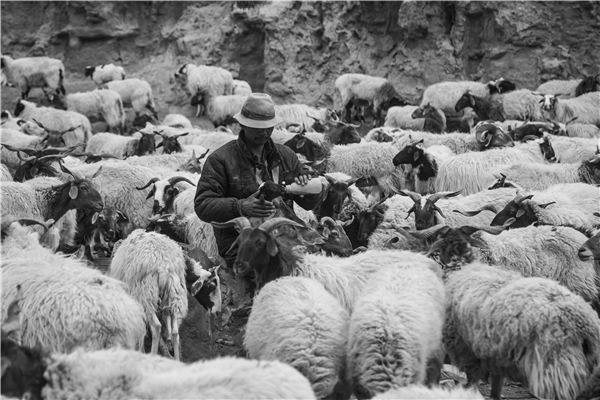
Tibetan moviemakers are increasingly moving away from themes of scenery and mysticism to tell people stories.
The Tibetan-language movie Tharlo has been nominated in four categories for this year's Golden Horse Award, a prestigious annual event held in Taiwan, due to its portrayal of modernization's influence on the lives of Tibetan people.
The other entries include biggies like Hou Hsiao-hsien's The Assassin and Jia Zhangke's Mountains May Depart.
The nominations were announced on Oct 1, and the winners will be declared on Nov 21.
Tharlo (after the protagonist's name) has been screened at international festivals in Venice, Busan and Vancouver in the recent past.
Pema Tseden, 46, the movie's local director, wanted to present a rare black-and-white feature to tell the world about ordinary Tibetans.
The moviemaker, who is also an author, took a local crew to shoot Tharlo, adapted from his namesake novel. The film cost 2 million yuan ($315,000).
"Most Western movie critics and theatergoers showed strong interest in it," the director says in a phone interview with China Daily.
"Some may have limited knowledge about Tibetan history and culture but they can understand the tale regardless of nationality and language."
Many of Pema Tseden's Tibetan-language novels have been translated into English, French, German and Japanese, among other foreign languages.
His Silent Holy Stone (2005), which is considered to be the first Chinese movie in Tibetan language, drew a lot of international attention.
Set in the rural areas of Northwest China's Qinghai province that is home to many Tibetans, Tharlo narrates the story of its middle-aged protagonist, who leads a tranquil life with his flocks of sheep and practices Buddhism, until he falls for a beautiful woman and his life changes for the worse.
Different from most movies that feature picturesque scenes and religious mysticism of Tibet, Tharlo shows a remote town that could have been anywhere in the world. In the movie, middle-aged locals are seen struggling with changes in society brought by modernization and urbanization, while the youth are readily taking to them.
In a scene, Tharlo wants to entertain his love interest with folk songs, but the young woman instead opts for hip-hop music.
According to a review in Yangtze River Daily, Tharlo reflects the nostalgia of the Tibetan people, who have left their remote hometowns for further education or better working conditions in big cities, but miss those they've left behind.
"An area inhabited by Tibetans is not a hinterland and neither an isolated heaven for novelty hunters," the newspaper writes.
Talking about the popularity of Tibetan culture in other parts of China, especially the cuisines and tourism, Pema Tseden calls it "a commercial consumption driven by curiosity".
He worries that the shallow enthusiasm of some people may lead to a distorted understanding of Tibetan culture.
But the good news is that more Tibetan moviemakers are now aiming to shake off stereotypical impressions of their land and people, he says.
Tibetan writer-director Sonthar Gyal's second movie, Gtsngbo, or River, made a splash at the Berlin International Film Festival in January. The Tibetan-language drama explores the complexity of human relations from a young girl's viewpoint.
"I hope my works can show how locals live and what they believe in," says Sonthar Gyal, adding that his movies aren't about cultural novelty or just landscape spectacles.
He won the Dragons & Tigers award at the Vancouver International Film Festival for his debut movie, The Sun-Beaten Path (2011).
Another movie, ATA (2014), directed by Tibetan monk Chakme Rinpoche, was praised at the Mumbai Film Festival for the thoughtful examination of humanity-about blind children.
Chakme Rinpoche, a Living Buddha in Qinghai province, hopes the movie can inspire viewers to ponder about the meaning of life, media report.
But even as more Chinese movies reach international audiences, the Tibetan-language features still revolve around small budgets, says Kalsang Gyal, a researcher and professor at the top government think tank, the Chinese Academy of Social Sciences.





